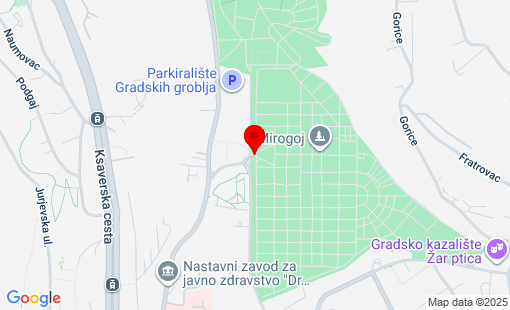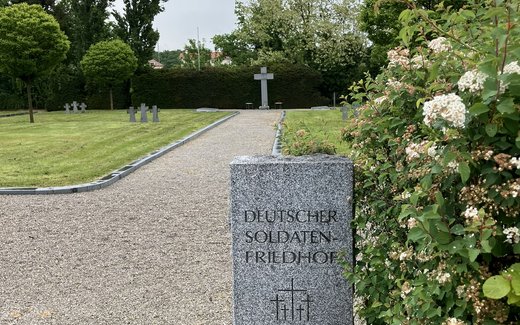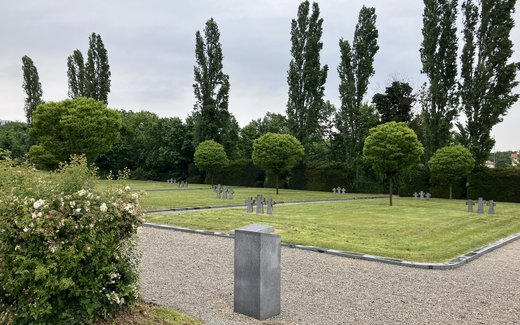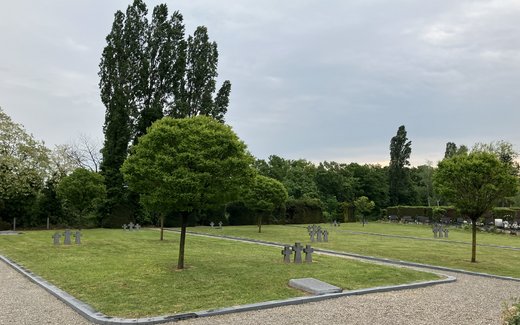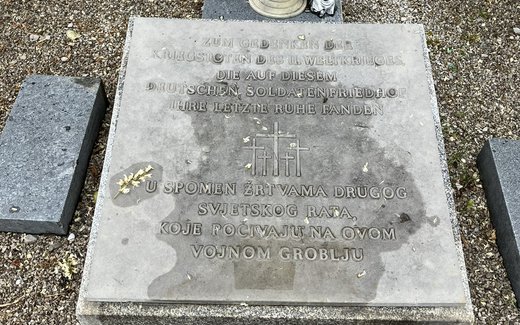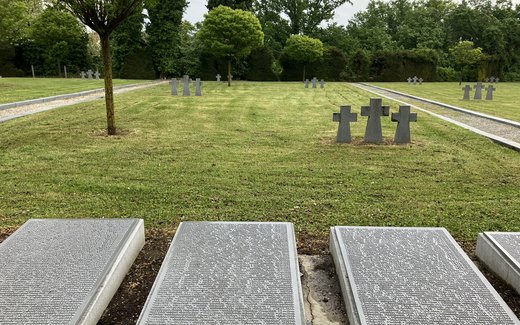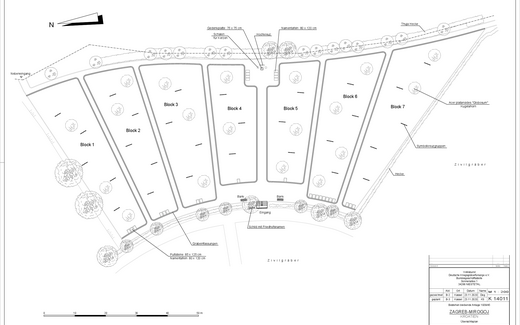The municipal cemetery of the Croatian capital Zagreb is located north of the city center on the
Center on the "Aleja Hermanna Bollea" in the Mirogoj district on a foothill of Zagreb's
Foothills of Zagreb's local mountain, Medvednica. On May 11, 1996, a
Cemetery for German soldiers was inaugurated here as a supplementary cemetery. There
rest more than 4,000 soldiers of the German Wehrmacht who lost their lives in the Second World War
lost their lives.
Cemetery description
At the Mirogoj cemetery in Zagreb, around 2,000 German soldiers were buried during the Second World War
about 2,000 German soldiers were buried there. In agreement with the city administration
the Volksbund Deutsche Kriegsgräberfürsorge e. V. (German War Graves Commission) had the gravesite
And 1995 and provided it with groups of symbolic crosses.
Metal plaques were inscribed with the names of all those registered for the Mirogoj municipal cemetery
registered for the municipal cemetery. The opening of the new cemetery dates from May 11, 1996
of the redesigned cemetery. As a result of the additional burials, more than
4.000 German war dead are buried there. The multi-denominational Mirogoj cemetery
has an area of almost 72.4 hectares. This makes it the largest cemetery
Cemetery in Croatia. Designed as a park, the site is not only a special sight in
A special sight in Zagreb, but is also one of the most beautiful cemeteries in
In Europe. Several memorials can be found at the cemetery, including
for the victims of the First World War and in particular for those who died in the
yugoslavian wars in the period from 1991 to 2001.
Many well-known Croatian personalities have also been laid to rest there
have been laid to rest there.
History
The Mirogoj cemetery was established in 1876 on a plot of land belonging to the
On land belonging to the linguist Ljudevit Gaj. Herman Bollé, one of the most important
most important architects in Croatia at the time, designed the main buildings. The construction of the
Of the arcades, the domes and the church in the entrance portal began in 1879
The work was not completed until 1929.
On behalf of the federal government, the Volksbund looks after three
War cemeteries of the Second World War, where 4,728 dead are buried
are buried. This work is based on the agreement signed between the Federal Republic of Germany
germany and the Republic of Croatia on December 9, 1996
War Graves Agreement. Originally, the graves of the dead of the Second
World War II were spread over more than 900 municipalities. The maintenance of these many
Would have required too much effort in the long term. Therefore
the Volksbund's reburial service transferred the war dead to central cemeteries
Cemeteries.
In the fall of 1994, the restoration of two sites in Zagreb began - the
Mirogoj and Gornje Vrapèe cemeteries. this was followed in 1997 by the renovation of a German
Cemetery in Split, which was completed the following year
was completed the following year. Finally, in 2012, the inauguration of a renovated cemetery at the
Cemetery in the municipality of Sisak, where German war dead from the Second
German war dead from the Second World War are also buried there.
Special feature
The Mirogoj cemetery contains graves of members of various religions
Religions. People of Jewish, Roman Catholic, Orthodox and Muslim faiths are buried there
and Muslim faiths are buried there. In keeping with the character of the cemetery as a park
works by many famous artists have been placed there. Among the
famous personalities buried in the cemetery include Franjo Tuðman,
the first freely elected president of Croatia after its separation from the
yugoslav federation.
